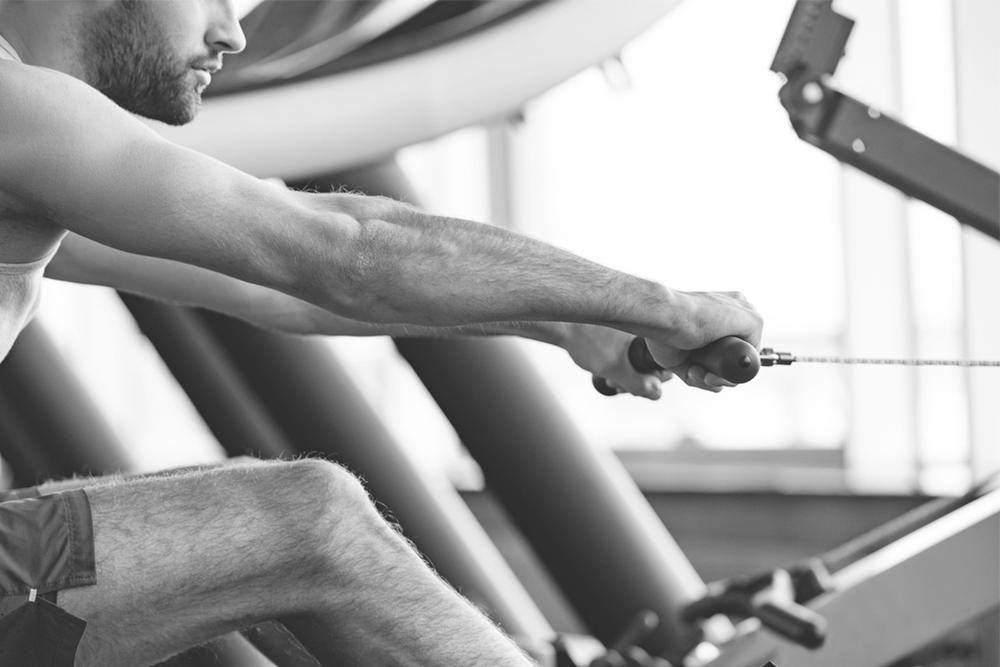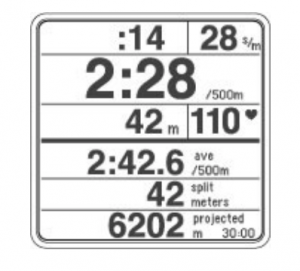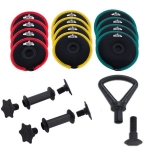How to Read the Erg Rowing Numbers

Dayton Kelly
How to Read the Erg Rowing Numbers
If you have been following my recent string of articles, you likely have tried rowing on the ergometer and are back with some questions. Probably high on that list of questions are ones regarding what all of the numbers that show up on the erg’s monitor mean. In this post, we will quickly review the function of each of these values and how they can be used to unlock the true versatility of this exercise machine.
So you sit down on the machine, pull the handle a couple times, and up pops a screen similar to this:

How to Read the Erg Rowing Numbers
We will focus on four main numbers that you can use to your advantage: your rate (top right corner), your distance (to the left directly above the thick black line), your split (the biggest number), and your time (top left corner). The rate value will tell you your number of strokes per minute; the distance tells you how far you would have traveled over the course of your workout; the split gives you the time it would take you to row 500 meters and is your best measure of how fast you are going; and the time tells you how long you have been rowing.
Related Article: The Perfect Catch
Using Numbers and the Damper To Adapt Your Training
Once you understand these values, you can then use them to measure your progress and, to the purpose of this article, adapt your workout on the ergometer to train your body to your liking. In my first article, I mentioned that the erg can be used to achieve weight loss, improve cardio, build strength, power and bone density, and improve your mobility. Here we will go over how you will use the four numbers discussed above and the damper (the stick on the side of the flywheel) to adapt your training.
Weight Loss and Intensity
When looking to achieve weight loss, there are two prominent convictions in the literature. One argument suggests that quick, high-intensity pieces are the best way to lose weight; the other argues that prolonged, moderate to low-intensity pieces are the answer. Currently, there is no definitive answer, and I suggest choosing whichever you prefer (even better, alternate!). If you decide to do the high-intensity pieces, you should aim to complete short distances at a high rate as fast as possible (+30 strokes/minute). Your goal will be to shorten the length of time it takes you to complete the distance each successive workout. An example might be four 500 meter pieces.
 Enhance the intensity of your workout with HyperWear Gear and save space with their SandBell Weights.
Enhance the intensity of your workout with HyperWear Gear and save space with their SandBell Weights.
Low to Moderate Intensity Option
When selecting the prolonged low to moderate intensity option, your goal will be to travel as far as possible over a longer time period. In this situation, you should keep your rate value lower, often somewhere between 18-20 strokes per minute, and your split at a constant, maintainable speed (at a level where you can talk while rowing). Your goal should be to complete progressively longer pieces and travel farther in each piece. In either of these options, you should set the damper stick to a comfortable resistance (between 3 and 4 is a pretty common realm). Both of these options will concurrently achieve cardio improvements, but, like weight loss, a combined approach will find better results.
Strength, Power, and Bone Density
When looking to improve strength, power, and bone density, you are better off using high levels of resistance. To do this, you will increase the damper to a higher number (8-10) and then perform high-intensity pieces at low rates. You should aim to achieve the lowest split possible each stroke while maintaining a stroke rate somewhere around 16-18 strokes per minute. An example might be ten 1 minute pieces. It is important to maintain good posture and keep your core tight and back straight when attempting this type of training.
As such, when selecting your damper for this type of training, you should choose the highest level of resistance you can manage without breaking your form or bending your back. I recommend starting with the damper between 3 and 4 and incrementally bringing the damper up each workout. It is important to note that this manner of training is not best suited to increase muscular size but, instead, strongly develops power and explosiveness.
Related Article: Mastering the Rowing Stroke
Mobility or Injury Recovery
If mobility or injury recovery is your goals, your best bet is to work on your technique at low dampers (0 is a good place to start!) and then slowly row increasingly longer distances at low rates and low intensity. Once you complete longer distances, you can slowly increase the damper, dialing back your distance and then working the distance back up with each workout before increasing the damper again. Your goal should be to slowly progress in this manner without ever experiencing acute pain during a workout or aches afterward. Usually, this type of workout plan progresses into either a strength, cardio, or weight loss plan. It is a very good way to slowly introduce yourself to the erg or training in general as it allows your body time to adjust to a new stress without injury.
Recover faster from high-intensity workouts with the combination of cold therapy and massage made possible by the Recoup Fitness Roller.
Takeaways
Remember that none of the numbers given in this article are exact; they are guidelines for you to use to explore your body and find what works best for you. I hope that after reading this article you will not only be able to better focus your training to your goals, but also that it sparked some new workout ideas for you to train in other areas of fitness. The best approach to fitness is a rounded approach!
 Want to know exactly what you need to eat to feel better, lose weight, end cravings and have more energy? Check out the Viome gut microbiome and wellness kit.
Want to know exactly what you need to eat to feel better, lose weight, end cravings and have more energy? Check out the Viome gut microbiome and wellness kit.










